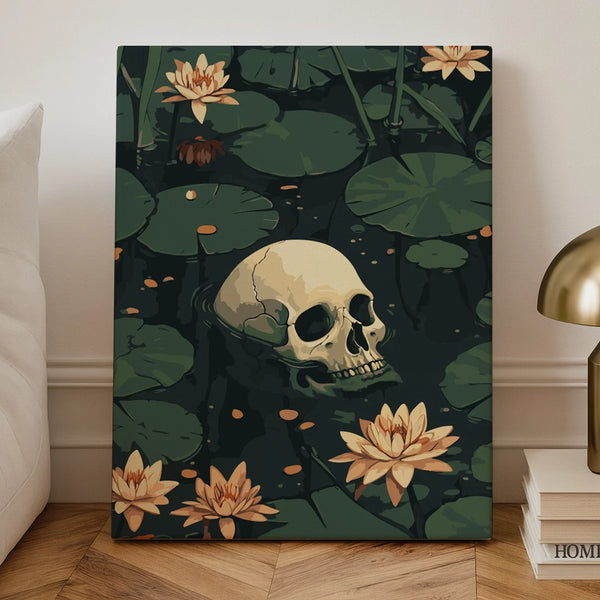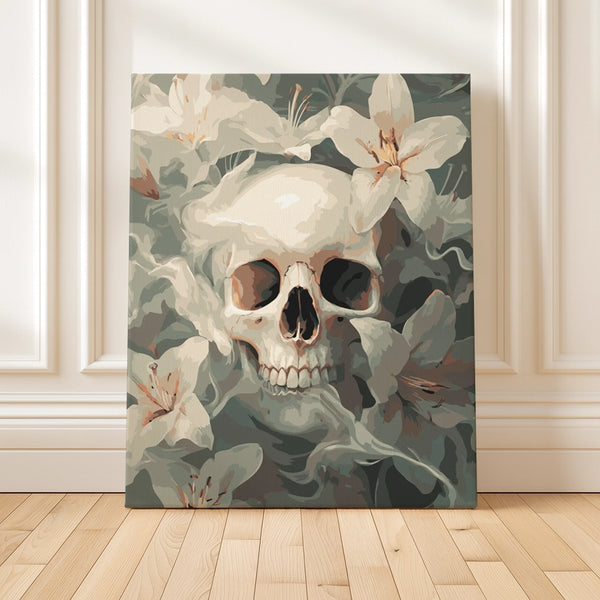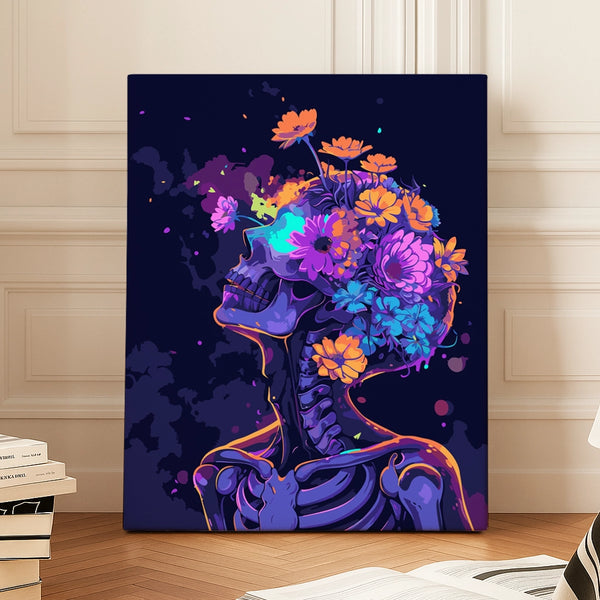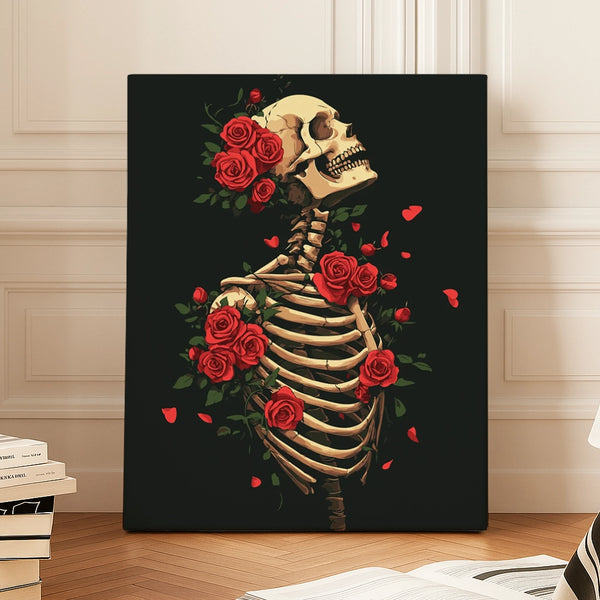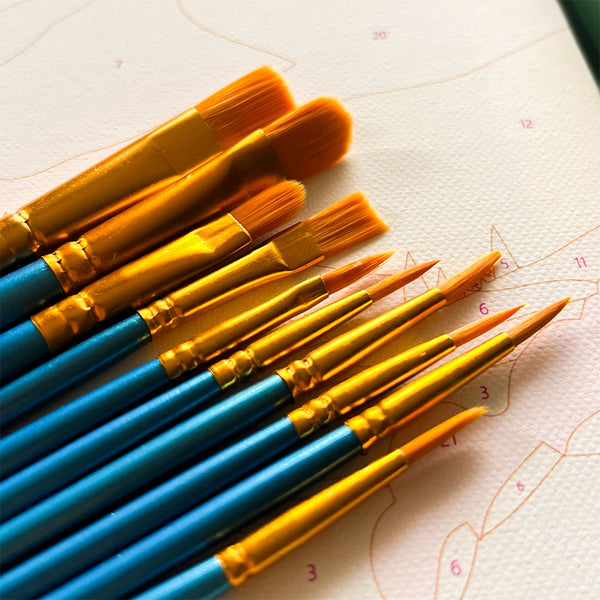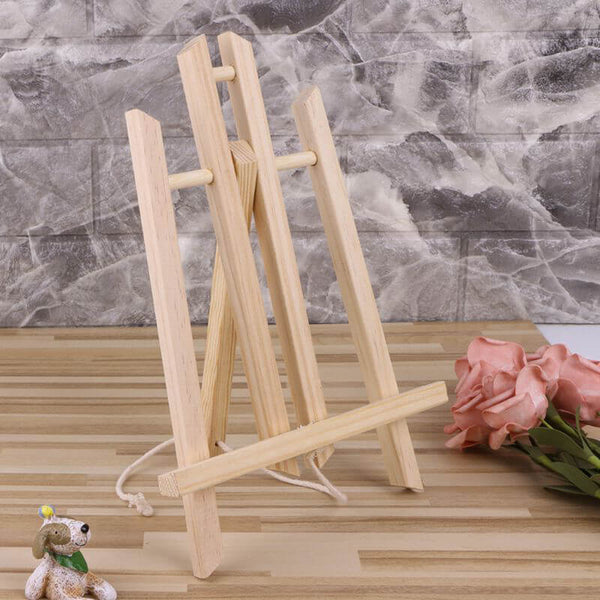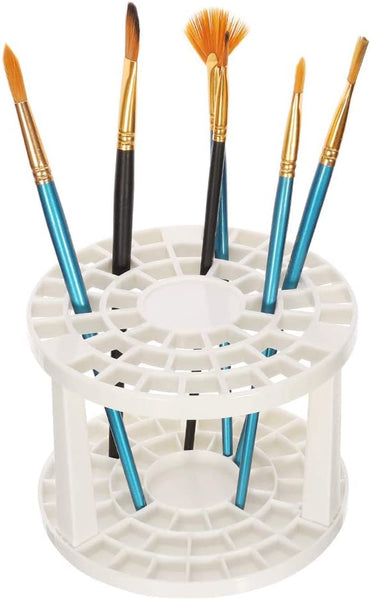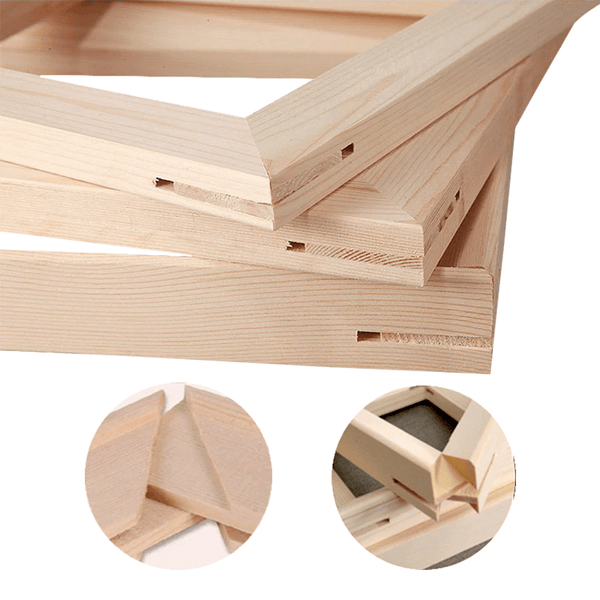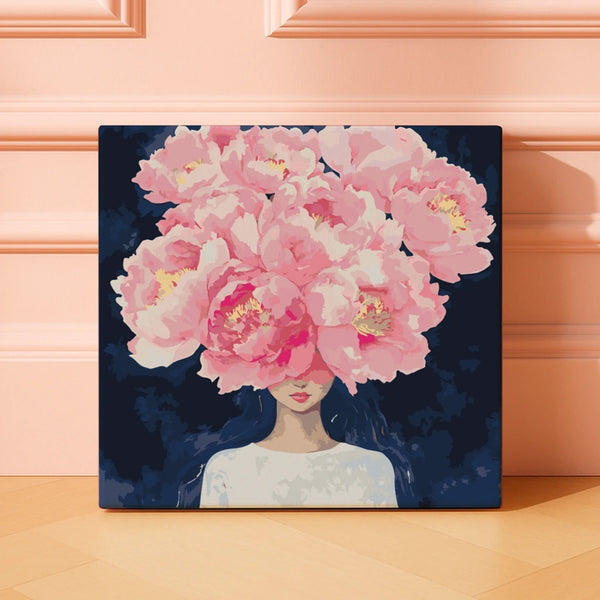How to use color as your personal emotional GPS
Have you ever felt something so big, so complicated, that words just... fail you?
Maybe it's not quite sadness, but it's definitely not happiness either. It's somewhere in between, mixed with a little bit of nostalgia, a dash of hope, and something you can't quite name. You search for the right word, but nothing fits.
Here's what we've learned at ArtSpark: sometimes your feelings don't need words. They need colors.
Welcome to emotional color mapping - a simple but powerful practice of using colors to understand, process, and express what's happening in your heart. And the best part? You don't need to be an artist or a therapist to do it. You just need paint, numbers, and willingness to let colors speak for you.

When Your Heart Speaks in Color
Think about the last time someone asked "How are you feeling?" and you struggled to answer. Maybe you said "fine" even though you weren't. Maybe you said "tired" when what you really felt was overwhelmed, disconnected, and a little lost.
Our emotional vocabulary is surprisingly limited. We learn words like happy, sad, angry, and scared as children, and then we try to cram every complex adult feeling into those tiny boxes.
But colors? Colors have infinite vocabulary.
That specific shade of dusty blue that feels like a rainy Sunday morning. The warm coral that reminds you of hope mixed with contentment. The deep forest green that feels like safety and grounding. The anxious yellow-green that shows up on stressful days.
These colors communicate what words can't capture. And when you paint them, something magical happens - you process the feeling without having to explain it to anyone, including yourself.
What Is Emotional Color Mapping?
Emotional color mapping is the practice of connecting your feelings to specific colors, then using those colors to understand and work through emotions. It's part art therapy, part mindfulness practice, and part personal emotional research.
Here's how it works in its simplest form:
- Notice what you're feeling
- Ask yourself "What color is this feeling?"
- Paint that color or paint with that color in mind
- Notice what happens to the feeling as you create
Sounds simple, right? It is. But simple doesn't mean shallow. This practice can take you incredibly deep into emotional understanding and healing.
Scientists who study color psychology have found that colors genuinely affect our nervous systems, hormones, and emotional states. Blue actually lowers blood pressure. Red genuinely increases heart rate. Yellow truly stimulates mental activity.
But beyond these universal reactions, each of us builds our own personal color language based on our experiences, memories, and associations. Your grandmother's lavender sweater might make purple feel like love to you. Someone else might associate purple with loneliness because their childhood bedroom was that color during a difficult time.
Both are valid. Both are true. Your emotional color map is uniquely yours.

Your Personal Color-Emotion Dictionary
While color psychology offers some universal connections, your personal color language matters most. Here's a starting framework, but remember - you're the expert on what colors mean to you.
Which color is your favorite?
Red Family: Bright red often shows up with anger, passion, or urgency. That racing feeling when your heart pounds and you need to DO something right now. Deep crimson might be intense love or deep commitment. Pink brings vulnerability, gentleness, or tender affection. Coral tends to feel playful and warm.
Blue Family: Sky blue usually brings peace, openness, or freedom - like taking a deep breath. Navy feels stable and trustworthy, like solid ground under your feet. Teal often represents emotional balance or healing in progress. Turquoise tends to show up with clarity and honest communication.
Yellow Family: Bright yellow typically means joy, optimism, or excited energy. Golden yellow often feels like contentment or quiet happiness. Pale yellow can represent gentle hope or new beginnings. Mustard sometimes shows up with complex feelings - happiness tinged with caution or joy that feels hard-won.
Green Family: Emerald green often connects to growth, renewal, or ambition. Forest green brings grounding, safety, and nature connection. Lime feels like fresh starts or buzzing excitement. Olive can represent tired-but-persevering energy or mature calm.
Purple Family: Violet tends to appear with introspection, spirituality, or mystery. Lavender brings gentle self-care and soothing feelings. Deep purple often connects to transformation, luxury, or personal power.
Orange Family: Bright orange shows up with enthusiasm, creativity, or social energy. Burnt orange often brings autumn comfort or nostalgia. Peach can feel like gentle encouragement or soft confidence.
Neutrals: White might represent blank slates, clarity, or new chapters. Black often shows up with rest, grief, or the quiet void before something new begins. Gray appears during processing, uncertainty, or transitions. Brown brings earthiness, reliability, or feeling grounded.
But here's the important part: if bright yellow feels like anxiety to you instead of joy, that's your truth. If black feels powerful and protective instead of sad, honor that. Your color map is yours alone.

How to Build Your Emotional Color Map
Ready to start mapping your own emotional landscape in color? Here's how to begin.
Week One: The Color Mood Tracker
For seven days, check in with yourself each evening and ask: "If today had a color, what would it be?"
Don't overthink it. Just notice what color comes to mind first. Maybe Monday was gray with flashes of yellow. Tuesday might have been deep blue. Wednesday could have been orange with red edges.
Write down the color and a few words about what you felt that day. By the end of the week, you'll start seeing patterns. Maybe your anxious days are always some version of green-yellow. Maybe your peaceful days tend toward blues and soft purples.
This is the beginning of your personal color vocabulary.
Week Two: Painting What You Feel
Choose an ArtSpark kit based on your emotional state. Not based on what would look nice on your wall or what matches your decor, but based on what colors your heart needs right now.
Feeling overwhelmed and scattered? Maybe you need the grounding greens and browns of a forest scene. Feeling flat and disconnected? Perhaps the warm oranges and yellows of a sunset design. Processing something sad? The gentle blues and purples of a twilight landscape might call to you.
As you paint, pay attention to how working with these colors affects your mood. Does painting blue calm you down? Does adding yellow sections give you little bursts of energy? Does working with red help you feel strong and capable?
You're not just creating art. You're having a conversation with your emotions through color.
Week Three: The Emotion-Color Journal
Start keeping track of which emotions connect to which colors for you. This isn't a rigid assignment – just gentle noticing.
"Today I felt hopeful, and I wanted to paint with peach and soft yellow."
"I was angry this morning, and I found myself drawn to the red sections of my painting. After 20 minutes of painting red, I felt calmer."
"Something about the deep purple in this design makes me feel thoughtful and introspective in a good way."
Over time, this journal becomes your personal emotional color decoder. When you can't name a feeling, you can paint it and then reference your journal to understand what your color choice is telling you.
How ArtSpark Kits Support Your Emotional Journey
We design every ArtSpark collection with emotional color mapping in mind. Here's how different color palettes support different emotional needs:
Calm & Grounded Collection (blues, greens, earth tones): Perfect for anxious days, overwhelmed moments, or when you need to feel stable and safe. These colors literally calm your nervous system while you paint.
Joy & Energy Collection (yellows, oranges, warm palettes): For when you need a mood boost, want to remember what happiness feels like, or are ready to celebrate good feelings. These colors energize and uplift.
Introspection & Healing Collection (purples, soft blues, gentle tones): Ideal for processing difficult emotions, doing inner work, or moving through grief and transition. These colors create space for reflection without overwhelming.
Balanced & Whole Collection (full spectrum, harmonious palettes): When you're feeling emotionally complex or want to work with your full range of feelings. These designs honor that life isn't one color – it's all of them.

Advanced Emotional Color Techniques
Once you're comfortable with basic emotional color mapping, try these deeper practices:
The Feeling Sequence
Paint through a progression of emotions by choosing sections intentionally. Start with the colors that match how you feel now. Gradually move toward colors that represent how you want to feel. This creates a visual journey from current state to desired state.
For example: Start with grays and dark blues (sadness), move to teals and soft purples (processing), finish with gentle yellows and corals (hope). Your painting becomes a roadmap of emotional transformation.
The Contrast Method
Sometimes painting the opposite of how you feel creates balance. Feeling too much fiery red anger? Paint cool blues. Feeling numb and gray? Add bright, warm colors. Your brain naturally seeks emotional equilibrium, and contrasting colors can help create it.
Color Conversations
Paint with someone you care about. Each person chooses sections based on their current feelings. You end up with a collaborative piece that represents two emotional landscapes coming together. It's a beautiful way to connect without having to find perfect words.
Your Emotional Color Practice
Ready to start your own emotional color mapping journey? Here's how to build a sustainable practice:
Daily Mini-Practice (5 minutes): Each morning or evening, ask yourself: "What color am I today?" Paint just 2-3 numbered sections in that color family. Over time, this daily color check-in becomes second nature.
Weekly Deep Dive (30-60 minutes): Choose your painting time based on emotional need rather than convenience. Feeling something big? That's your signal to paint. Let the weekly session be your emotional processing time.
Monthly Reflection: Look at all your completed sections or finished paintings from the month. What colors dominated? What does that tell you about your emotional month? Celebrate the patterns you notice.
Common Questions About Emotional Color Mapping
"What if I don't feel anything when I paint?"
That's actually really valuable information. Emotional numbness or disconnection has its own quality, and it's often gray, white, or muted colors. Painting these "empty" colors can actually help you reconnect with feeling over time. Just keep showing up, keep painting, and trust that feeling will return when it's safe.
"What if my color choices don't match the 'rules' of color psychology?"
There are no rules, only patterns. If orange feels sad to you, paint sad orange. If black feels joyful, paint joyful black. Your personal color language is the only one that matters. Trust your instincts over any chart or guide.
"Can I use this for happy emotions too, or just difficult ones?"
Please paint your joy! One of the most beautiful aspects of emotional color mapping is celebrating good feelings, not just processing hard ones. Paint your excitement in bright yellows. Capture contentment in soft greens. Preserve peaceful moments in gentle blues. Happy feelings deserve color expression too.
"What if I'm painting and suddenly feel different than when I started?"
That's the practice working! Color has the power to shift emotional states. If you start painting feeling anxious and end feeling calm, your nervous system is responding to the colors and the meditative painting process. This is exactly what we hope happens.
The Science Behind Why This Works
You might be wondering: is this just wishful thinking, or does color really affect emotions?
The research is clear: color has measurable effects on our nervous systems, hormones, and brain activity. Blue light actually slows heart rate and lowers blood pressure. Red genuinely increases alertness and energy. Yellow stimulates mental activity and can improve mood.
But beyond these physical effects, the act of creating with color provides emotional processing benefits. When you paint:
- Your prefrontal cortex (the worrying part) quiets down
- Your limbic system (the feeling part) gets space to process
- The repetitive motion soothes your nervous system
- You enter a meditative state that allows emotions to move through you
- You create distance from difficult feelings by externalizing them onto canvas
Art therapists have used color-based practices for decades with remarkable results. Emotional color mapping just makes this professional technique accessible to everyone through the structure of paint by numbers.

Your Feelings Deserve Color
Here's what we know for sure at ArtSpark: your feelings matter. All of them. The messy ones, the complicated ones, the ones you can't name, the ones that feel too big.
And they all deserve expression, understanding, and transformation into something beautiful.
You don't need to be an artist to map your emotions in color. You don't need therapy training to benefit from this practice. You just need to be willing to ask yourself "What color is this feeling?" and trust whatever answer comes.
The colors are already inside you. The paint by numbers just gives them somewhere to land.
Your emotional color map is waiting to be painted. What color are you today?
Ready to start your emotional color mapping journey? Browse our collections by emotional theme and find the colors calling to your heart right now. Share your emotional color discoveries with #EmotionalColorMapping – we'd love to see your feelings transformed into art.
Every feeling is valid. Every color tells a story. Paint yours.


